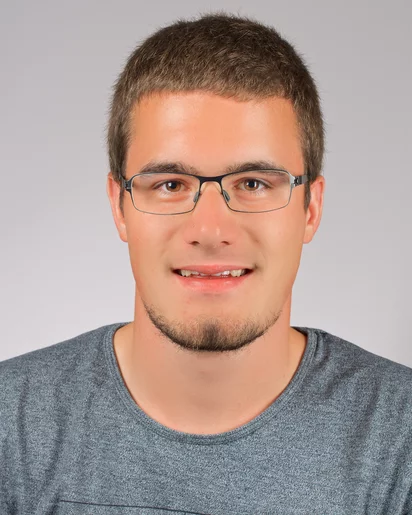Biography
Stephan Hitz is a beamline engineer working at the upcoming Debye beamline at SLS, Paul Scherrer Institut. He has studied systems engineering at the FHNW and completed his BSc degree in 2019.
Institutional Responsibilities
Planing and building of the upcoming Debye beamline at the Swiss Light Source (SLS). Realizing a rapid access instrument for chemical analysis and develop highly automated experiments for the endstation.
Selected Publications
For an extensive overview we kindly refer you to our publication repository DORA.
Fluorescence-detected quick-scanning X-ray absorption spectroscopy, Clark AH, Steiger P, Bornmann B, Hitz S, Frahm R, Ferri D, et al, Journal of Synchrotron Radiation, (2020)
Time-resolved X-ray absorption spectroscopy (XAS) offers the possibility to monitor the state of materials during chemical reactions. While this technique has been established for transmission measurements for a number of years, XAS measurements in fluorescence mode are challenging because of limitations in signal collection as well as detectors. Nevertheless, measurements in fluorescence mode are often the only option to study complex materials containing heavy matrices or in samples where the element of interest is in low concentration. Here, it has been demonstrated that high-quality quick-scanning full extended X-ray absorption fine-structure data can be readily obtained with sub-second time resolution in fluorescence mode, even for highly diluted samples. It has also been demonstrated that in challenging samples, where transmission measurements are not feasible, quick fluorescence can yield significant insight in reaction kinetics. By studying the fast high-temperature oxidation of a reduced LaFe0.8Ni0.8O3 perovskite type, an example where the perovskite matrix elements prevent measurements in fluorescence, it is shown that it is now possible to follow the state of Ni in situ at a 3 s time resolution.
A von Hamos spectrometer for: in situ sulfur speciation by non-resonant sulfur Kα emission spectroscopy, Kuzmenko D, Vogelsang U, Hitz S, Müller D, Clark AH, Kinschel D, et al, Journal of Analytical Atomic Spectrometry, (2019)
A von Hamos geometry based wavelength dispersive spectrometer combined with an in situ reactor cell has been developed to measure non-resonant sulfur Kα emission for the in situ speciation of low concentrations of sulfur. The spectrometer operates at 15 cm focusing radius, is equipped with a curved Si(111) crystal and a position sensitive detector, and is capable of achieving an energy resolution of 0.56 eV at 2.3 keV. We present the details of the spectrometer and dedicated sample-cell design to study chemical reactions in situ. The spectrometer capabilities are exemplified by an in situ study of sulfur speciation during H2S poisoning of SiO2 supported Ru nanoparticles performing CO methanation.

